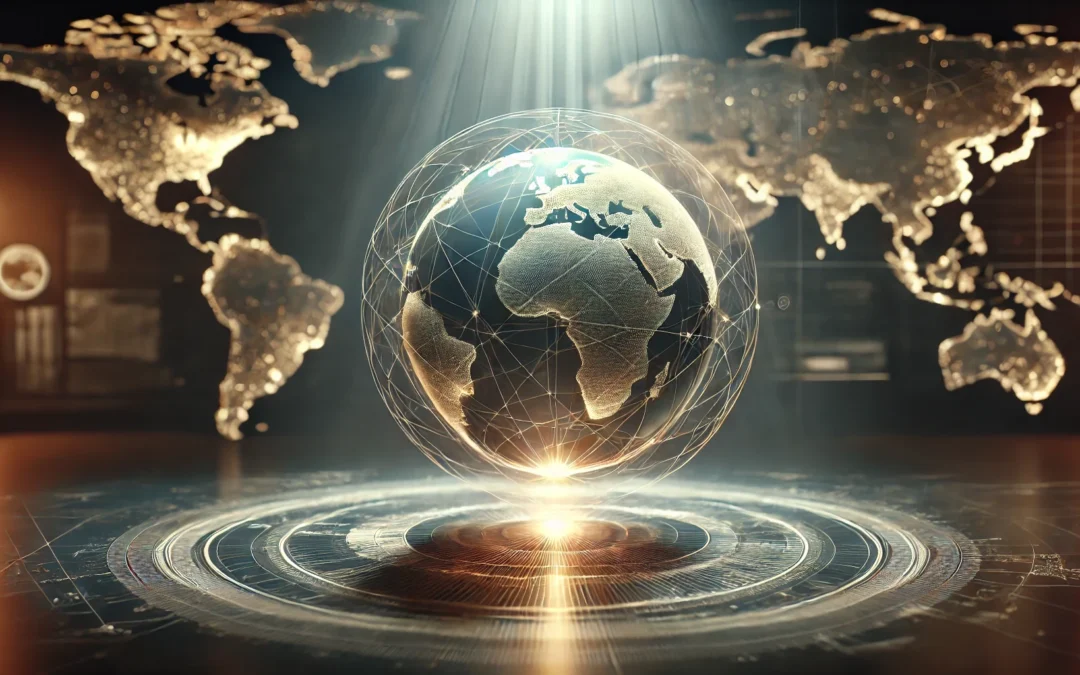International relations (IR) is a broad discipline that explores how countries and other global actors interact. From trade agreements and military alliances to diplomacy and international law, IR shapes much of the political, economic, and social dynamics across the world. To fully understand international relations, it’s essential to grasp the key concepts that drive these interactions. These 20 core ideas form the basis of how nations engage, collaborate, and at times, conflict with one another, making them crucial knowledge for anyone looking to understand global affairs.
Most Important Concepts in International Relations
1. Sovereignty
Sovereignty is the idea that each state has the ultimate authority to rule over its own affairs without outside interference. It forms the foundation of the modern international system. For example, a country like Japan makes its own laws, controls its borders, and governs its people independently from any foreign power. Sovereignty ensures that each state can determine its political, economic, and cultural path, but it also creates challenges when states clash over boundaries or human rights concerns. Protecting sovereignty often becomes a central theme in diplomatic discussions, especially when external forces threaten a nation’s independence.
2. Power
Power in international relations refers to a country’s ability to influence others and achieve its goals. Power is not just about having a strong military, though that is important. Economic strength, diplomatic influence, and even cultural appeal are all parts of power. For example, the United States has been able to shape global trade rules due to its economic power, while China has used its military and growing economic influence to assert control in regions like the South China Sea. Power often determines who sets the rules in the global order and how conflicts get resolved. It can be used to maintain peace, but it can also lead to competition and conflict when nations seek to expand their influence.
3. Diplomacy
Diplomacy is the art of managing relationships between countries through peaceful means. Instead of using force, nations engage in discussions, negotiations, and compromises to solve disputes or forge alliances. Take the example of the Paris Climate Agreement, where countries negotiated terms to collectively address global warming. Skilled diplomacy allows countries to resolve conflicts without going to war and can lead to long-term peace agreements. However, diplomacy requires patience, trust, and often involves making compromises that may not satisfy every party fully.
4. Globalization
Globalization is the growing interconnectedness of the world through trade, technology, and communication. It has created a global marketplace where goods, services, and ideas flow across borders more easily than ever. For example, a smartphone might be designed in California, assembled in China, and sold worldwide. While globalization opens doors to economic growth and innovation, it also brings challenges. It can lead to inequality, where some countries benefit more than others, or environmental degradation due to increased production. In international relations, globalization has made cooperation between states essential, but it has also exposed deep divisions, particularly when it comes to issues like immigration or trade disputes.
5. International Law
International law is a set of rules that countries agree to follow in their interactions with each other. It covers everything from trade agreements to war crimes. One of the most well-known examples of international law is the Geneva Conventions, which set the standards for humanitarian treatment during war. While international law helps maintain peace and order, enforcement can be a challenge because there is no global police force to make sure countries follow the rules. States that violate international law may face economic sanctions or political isolation, but powerful nations sometimes ignore these consequences, which can weaken the effectiveness of these laws.
6. Intergovernmental Organizations (IGOs)
IGOs are organizations made up of member states working together to address common issues. Examples include the United Nations (UN), the European Union (EU), and the World Health Organization (WHO). These organizations provide a platform for states to cooperate on issues that affect everyone, like climate change, security, or health. For instance, the WHO played a central role in coordinating the global response to the COVID-19 pandemic. However, the success of IGOs depends on the willingness of states to cooperate and sometimes compromises are difficult to reach due to differing national interests.
7. Non-Governmental Organizations (NGOs)
NGOs are independent organizations that work on various global issues, often influencing international policy through advocacy or humanitarian work. Unlike IGOs, NGOs are not made up of states but are often formed by private citizens or organizations. For instance, Amnesty International campaigns against human rights violations, while the Red Cross provides emergency aid in conflict zones. NGOs play a crucial role in international relations by holding governments accountable, delivering aid, and raising awareness on important issues. Despite their lack of formal power, they can often sway public opinion and influence policy on the global stage.
8. National Interest
National interest refers to the goals a state seeks to achieve to benefit its people, economy, and security. It often drives foreign policy decisions, whether they are about forming alliances, going to war, or negotiating trade deals. For example, a country rich in natural resources like oil may prioritize securing energy markets to support its economy. In contrast, smaller countries may prioritize maintaining peaceful relations with more powerful neighbors. National interest can sometimes lead to cooperation with other states, but it can also cause conflict when countries’ interests clash, such as in territorial disputes or competition for resources.
9. Realism
Realism is a theory that sees international relations as a struggle for power among self-interested states. Realists believe that every state seeks to ensure its own survival in an often hostile world, where cooperation is difficult. A classic example of realism in action is the Cold War, where both the United States and the Soviet Union built up military power to deter each other, fearing that the other might try to dominate. Realism often emphasizes the need for strong military capabilities and is skeptical of international organizations or agreements, which are seen as temporary or fragile in the face of power struggles.
10. Liberalism
Liberalism, as a theory, suggests that international relations are not just about power and conflict. Liberals believe that cooperation is possible and that international institutions, trade, and democracy can help states avoid conflict. For example, the European Union is often cited as a liberal success story, where former enemies have become close economic and political partners. Liberals argue that countries that trade together and belong to international organizations are less likely to go to war with each other. This approach focuses on creating structures that promote peace and stability through dialogue, agreements, and shared interests.
11. Balance of Power
The concept of the balance of power suggests that stability in the international system is maintained when no single nation or alliance becomes overwhelmingly powerful. This idea has shaped alliances and conflicts for centuries. For example, during the Cold War, the rivalry between the United States and the Soviet Union kept global power relatively balanced. Neither side could dominate because the other was equally strong. Countries often form coalitions or alliances to prevent one state from becoming too dominant. This strategy aims to keep the peace by ensuring that no single nation or group can impose its will on others without facing opposition.
12. Hegemony
Hegemony occurs when one country holds a dominant position globally or within a particular region. This dominant power can shape the rules and norms of the international system. For example, after World War II, the United States emerged as a global hegemon, leading in economic and military influence. Hegemony can bring stability when the dominant power enforces order and encourages cooperation. However, it can also breed resentment among other nations, which may feel constrained or threatened by the hegemon’s influence. Over time, these tensions can lead to serious challenges against the hegemon, sometimes destabilizing the global order.
13. Security Dilemma
The security dilemma describes a situation where one nation’s efforts to enhance its own security inadvertently make other nations feel less secure. For instance, if one country builds up its military for defense, neighboring countries may perceive this as a threat and respond by increasing their own military capabilities. This can lead to an arms race, where all nations involved feel compelled to keep escalating their defenses, even though no one may actually desire conflict. The security dilemma is a critical concept because it shows how actions intended to enhance security can paradoxically create greater insecurity, escalating tensions and increasing the risk of conflict.
14. Deterrence
Deterrence is the practice of discouraging hostile actions by threatening severe consequences. It is a strategy often used in military contexts, especially in the nuclear age. For example, during the Cold War, both the U.S. and the Soviet Union relied on nuclear deterrence, where the threat of massive retaliation kept both sides from initiating a nuclear conflict. The principle behind deterrence is straightforward: the potential cost of an attack is so high that the aggressor would prefer not to risk it. However, effective deterrence depends on credibility – the other side must believe that the threatened response will indeed happen if they act aggressively.
15. Soft Power
Soft power is the ability of a country to influence others through attraction rather than coercion. Unlike hard power, which relies on force or economic pressure, soft power stems from a country’s culture, values, and diplomatic relationships. For example, the global popularity of American films, music, and technology enhances the U.S.’s soft power by shaping global perceptions positively. Countries with strong soft power can sway international opinion, gain allies, and promote their values without using force. This type of influence can be more subtle but just as powerful, helping nations build long-term relationships and cooperation.
16. Hard Power
Hard power is about using force or economic means to influence the actions of other countries. It’s a more direct form of power, relying on military strength, sanctions, or economic leverage. For instance, during the Gulf War, the United States used military hard power to push Iraq out of Kuwait. Similarly, economic sanctions imposed on countries like Iran or North Korea are a form of hard power intended to pressure those governments into changing their policies. Hard power can yield quick results but is often seen as aggressive or confrontational. It can lead to resentment or conflict if not balanced with softer diplomatic approaches.
17. Multilateralism
Multilateralism is when multiple countries work together to address global challenges or resolve conflicts. It’s the opposite of unilateralism, where a country acts on its own. Multilateralism is most commonly seen in organizations like the United Nations or during international treaties on climate change or trade. For example, the Paris Agreement on climate change involves nearly every country in the world working collectively to reduce global warming. Multilateralism allows nations to pool resources, share responsibilities, and find common ground, especially on complex issues that affect the global community. It encourages dialogue and collaboration, helping prevent conflicts by building consensus among states.
18. Unilateralism
Unilateralism occurs when a country makes decisions or takes actions independently, without consulting or involving other nations. This approach often reflects a desire to prioritize national interest above international consensus. For example, when the U.S. withdrew from the Paris Climate Agreement under the Trump administration, it acted unilaterally, ignoring the broader global effort to tackle climate change. Unilateral actions can sometimes achieve short-term goals but may isolate a country in the long run, as it may alienate allies and partners. In international relations, unilateralism is often seen as risky because it can lead to tensions or conflicts with other states.
19. Collective Security
Collective security is the idea that peace can be maintained when countries agree to protect each other. The concept is simple: if one country is attacked, all the others will come to its defense. This system aims to prevent aggression by making it clear that any attack will be met with overwhelming opposition. NATO (North Atlantic Treaty Organization) is a prime example of a collective security arrangement, where an attack on one member is treated as an attack on all. Collective security fosters cooperation and deters potential aggressors, but its success depends on the commitment of all members to respond when needed.
20. Humanitarian Intervention
Humanitarian intervention involves the use of military force by one or more countries to stop widespread human rights abuses in another country. While it is often justified on moral grounds, such interventions are controversial. They involve balancing the principle of sovereignty against the responsibility to protect people from atrocities such as genocide or ethnic cleansing. A well-known example is NATO’s intervention in Kosovo in 1999, where military force was used to prevent further ethnic violence. Humanitarian interventions can save lives, but they also raise difficult questions about the limits of national sovereignty and the potential for misuse by countries seeking to advance their own interests.
Additional Key Concepts in International Relations
- Geopolitics
- Non-State Actors
- Nationalism
- International Regimes
- Neorealism
- Neoliberalism
- Arms Control
- Sanctions
- Foreign Aid
- Trade Liberalization
- Economic Interdependence
- Military Alliances
- Peacekeeping
- Regional Integration
- Cybersecurity
- Disarmament
- Preventive Diplomacy
- Energy Security
- Climate Diplomacy
- Global Governance
The Importance of International Relations in a Globalized World
In today’s world, no country exists in isolation. What happens in one part of the world can quickly affect others. International relations (IR) is crucial because it helps us understand how countries interact, negotiate, and respond to global challenges. Climate change is a good example. No single country can solve this issue alone. Global cooperation, through agreements like the Paris Climate Accord, is necessary to reduce carbon emissions and protect the environment. Similarly, cybersecurity threats don’t stop at borders. When hackers target critical infrastructure, the ripple effects can be felt globally, disrupting economies, communication, and even national security.
The COVID-19 pandemic further highlighted the importance of international cooperation. Nations had to work together to share information, distribute vaccines, and tackle the economic fallout. Without strong international relations, the response would have been even slower, and the impact more severe. Trade is another area where international relations touch everyday lives. The food on our tables, the phones in our hands, and the clothes we wear often come from other countries. Understanding how trade agreements are made and maintained shows just how interconnected our world really is.
Global governance, which refers to international institutions like the United Nations or the World Health Organization, helps maintain stability in these uncertain times. These organizations provide platforms for countries to collaborate on issues that transcend borders, like health, security, and human rights. As the world continues to globalize, the importance of international relations in shaping our future cannot be overstated.
How International Relations Theories Explain Global Politics
International relations theories offer different lenses to interpret world events. These theories help explain why countries act the way they do and how they engage with each other. One of the key theories is Realism. Realists believe that nations are primarily driven by self-interest and the need for survival in a competitive world. Power and security are at the heart of this theory. For example, during the Cold War, both the United States and the Soviet Union built up massive military arsenals to deter each other from attack. This balance of power kept direct conflict at bay, demonstrating Realism’s focus on security.
In contrast, Liberalism emphasizes cooperation. Liberals argue that through international institutions, trade, and diplomacy, countries can work together to achieve mutual benefits. The European Union is a prime example of Liberalism in action. Former rivals now collaborate on economic, political, and security issues, showing that cooperation can lead to stability and peace.
Then there’s Constructivism, which takes a different approach. Constructivists argue that international relations are shaped by social constructs, ideas, and identities. In this view, the beliefs and values of countries matter just as much as power and security. For example, the global shift toward recognizing climate change as a critical issue is driven by changing social norms and ideas, not just by material interests.
By understanding these theories, readers can better analyze why countries choose conflict or cooperation. Each theory offers valuable insights into the motivations and strategies behind state behavior in global politics.
Challenges Facing International Relations Today
International relations face complex challenges today that shape the future of global politics. One of the biggest challenges is the rise of populism. Populist leaders often reject international cooperation in favor of national sovereignty, which can strain relationships between countries. The “America First” policies of recent years, as well as Brexit, reflect this trend. This shift toward nationalism makes it harder for countries to address global issues like migration and climate change.
Another pressing challenge is shifting power dynamics. The rise of China and the relative decline of Western powers, like the U.S. and Europe, are changing the balance of global power. As China asserts itself economically and militarily, it challenges the traditional dominance of Western countries in institutions like the United Nations or the World Trade Organization. This shift creates tensions and could reshape international alliances and trade networks.
Technology is also transforming warfare and diplomacy. Cyberwarfare and artificial intelligence are becoming tools in both conflict and negotiations. Attacks on government systems or infrastructure can now be carried out remotely, affecting national security without a single shot being fired. This digital transformation requires new strategies in international relations, as traditional military power may not be enough to protect a nation from these types of threats.
As the world grapples with these challenges, the field of international relations will need to adapt. Understanding these shifts is essential for navigating the future of global governance and diplomacy.
Emerging Concepts in International Relations
As the global landscape evolves, new concepts are gaining prominence in international relations. One such idea is cyber diplomacy, which refers to how nations manage relationships in the digital world. With cyberattacks and data breaches becoming more frequent, countries must develop new agreements and norms to protect digital infrastructure and ensure cybersecurity. Cooperation in this area is essential to prevent conflict and maintain stability.
Another emerging concept is environmental security. As climate change intensifies, nations are increasingly seeing environmental issues as security threats. Droughts, rising sea levels, and extreme weather events are not only environmental problems but also sources of conflict. Countries may compete for dwindling resources like water or arable land, making environmental cooperation a crucial part of international relations.
Space governance is also becoming a key area of focus. As private companies and countries like the U.S., Russia, and China expand their activities in space, questions about the ownership, use, and militarization of space are coming to the forefront. Establishing clear international rules for space exploration and resource utilization will be crucial to prevent conflict and ensure peaceful development.
By focusing on these emerging concepts, international relations scholars and policymakers can better anticipate and address the challenges of tomorrow.
The Most Popular on BitGlint

40 Social Dilemma Examples in the World & Real Life
Social dilemmas are everywhere. They shape the choices we make at work, in our communities, and even on a global...

30 Favor Examples & Definition
Doing a favor means helping someone without expecting anything in return. It’s an act of kindness that can strengthen...

30 Naivety Examples & Definition
Naivety is something most people experience at some point in their lives. It often starts in childhood, but for some,...

20 Chronology Examples & Meaning
Chronology is something we use more than we realize. It shows up in conversations, in how we remember the past, and in...

30 Wishful Thinking Examples & Meaning
Wishful thinking is something we all do at some point. You hope things will turn out fine—even if there’s no real...

20 Examples of Gravity & What Gravity Really Is
Gravity is one of the most important forces in the universe, but many people don’t fully understand what it really is...

20 Examples of Secondary Consumers in the Food Chain
Secondary consumers are animals that eat other animals—usually herbivores that feed on plants. They’re an important...
Get Inspired with BitGlint
The Latest
30 Flow State Examples & Definition
Most people have felt it at some point — that rare moment when everything just clicks. You're working, moving, or thinking, and suddenly it's like the rest of the world fades out. You're focused, clear, and everything you're doing feels smooth and natural. That’s...

30 Cynicism Examples in Everyday Life & Definition
Cynicism is something most people have seen, heard, or even felt - but few stop to really think about what it means. It shows up in jokes, in conversations, and in quiet thoughts we don’t always say out loud. Some people wear it like armor. Others see it as honesty....
50 Examples of Square Things
Square things are part of everyday life, even if we don’t always think about them. From objects we use at home to tools, packaging, and design elements we see out in the world, the square shape is everywhere. It’s simple, balanced, and practical — which is exactly why...
20 Hinduism Examples: Symbols, Gods & Core Beliefs
Hinduism is practiced by over a billion of people every day - but for those unfamiliar with it, it can seem complex or even confusing. With its many gods, rituals, and traditions, it raises a lot of questions. What do Hindus actually believe? What are the main...

